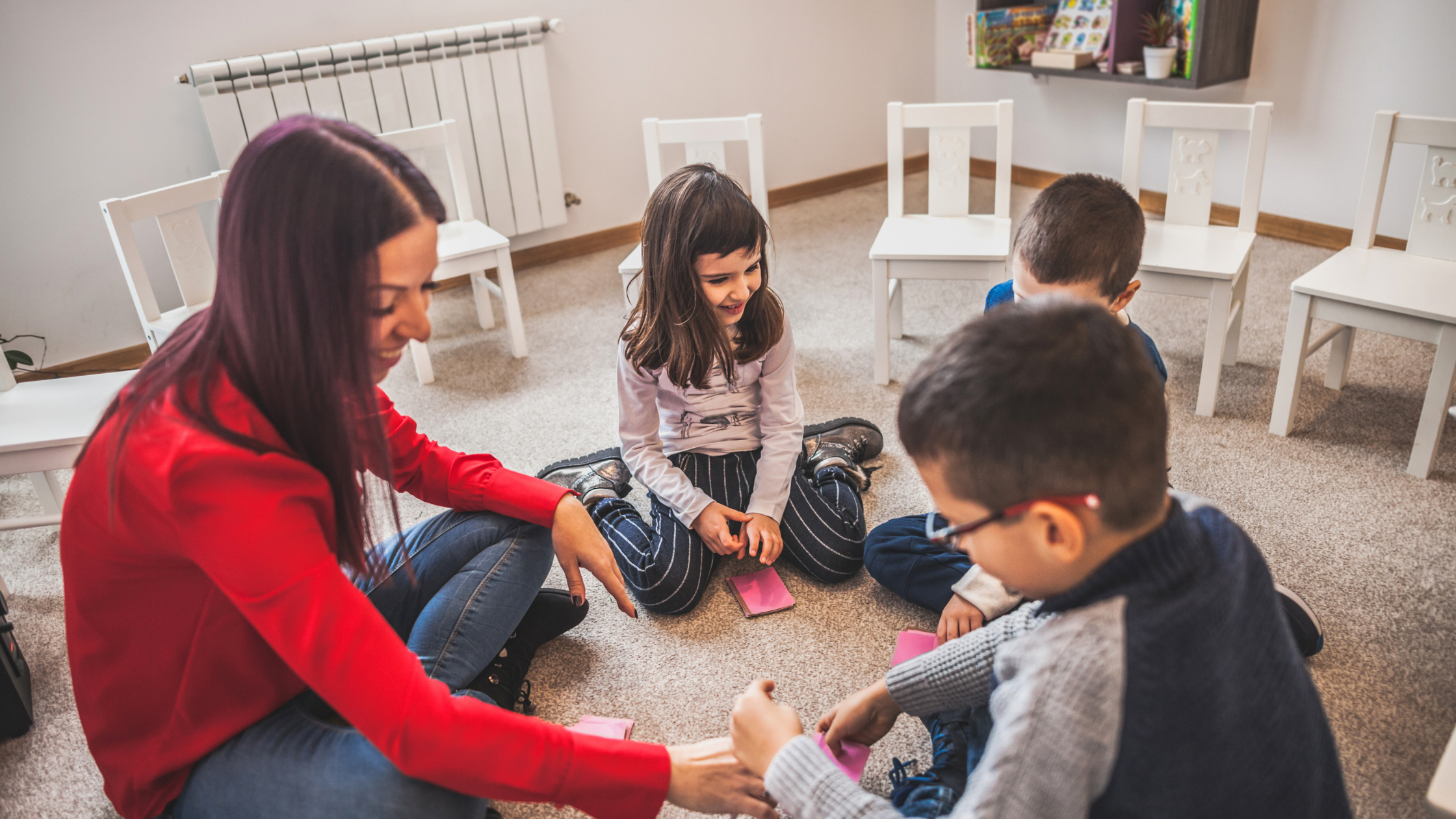Universal Design for Learning Strategies - Classroom Layout
Nov 29, 2021

Education is something that everyone should have access to, regardless of hearing (or any disability!). If we want deaf and hard of hearing (DHH) students to be successful, one strategy is to use Universal Design for Learning (UDL), which provides strategies that make learning accessible to ALL students, including students who are deaf or hard of hearing. These are great strategies to utilize not only because it is all inclusive and guards against students feeling singled out, but also can be a great way to facilitate buy-in from teachers, so that they recognize that by supporting their DHH student in this way, they are actually supporting all the students in their classroom. Because, after all, accessibility goes beyond the visual and auditory access and includes changes in the classroom instruction and the space itself.

So, how do we make our classrooms more accessible? How can we incorporate Universal Design for Learning (UDL) into our classroom practices? This blog will discuss universal design for learning, what it means for your classroom layout, and provide you with a simple strategy that will help make classrooms more accessible.
First, we need to understand what UDL is. In its essence, UDL aims to make places and things more accessible to all individuals. It provides flexibility in the ways information is presented, how students respond to or demonstrate knowledge and skills, and the ways in which students are engaged. Not only that, it reduces barriers in instruction, provides appropriate accommodations, supports students but challenges the system, and maintains high expectations for ALL students.
The misconception with UDL is that it’s just for special education. That is not the case! As indicated in its name, it’s designed to be universal, meaning for every student. Once we can understand that concept, we can begin to implement its principles and have an impact on every student in the classroom, including your student who is deaf or hard of hearing..
Does it mean more work? Yes, maybe in the beginning, but trust that it will be worth it! It will positively impact student achievement in many ways, not just for special education students, but for EVERY student in the classroom.
Children thrive in language-rich environments that allow them to develop social language, academic language, reasoning skills, and numeracy, as well as identity. Children lacking auditory access, language skills or the opportunities to fully engage using language are at high risk of failure when the environment does not match their strengths and needs. Because of this, in general, a typical classroom layout is restrictive by design for children who are deaf and hard of hearing (or any student lacking auditory access, language skills or the opportunities to fully engage.)

CLASSROOM LAYOUT:
Let’s begin by looking at a typical classroom layout, recognizing its barriers, and then identifying modifications that can be made that will support everyone in the classroom, including deaf and hard of hearing students.
Consider the layout of a typical classroom, and, specifically, whether it is inclusive for your deaf or hard of hearing student or if it presents barriers to learning.
How easily can the deaf and hard of hearing students see the teacher? How is the lighting? The brighter the lights, the better. Do all students have clear visual access to the teacher? Where are the students sitting in the classroom? For deaf/hard of hearing students, if they are sitting in the back of the classroom chances are they have less access to the teacher or the comments their peers in the front of the room make. If they are sitting in the front of the room, they are also missing the comments and interaction from their peers in the back of the room.
Is there background noise coming from the hallway, open windows, or the band room next door? If other students are chattering in the background, it can make it more difficult for students to listen to what the teacher has to say. Does the teacher walk around when they speak? Is there any moment where the teacher’s back is to the students? It’s not only about where the students are sitting, but also where the teacher is in the classroom. Any of these circumstances can completely cut off a student who is deaf or hard of hearing from learning. However, they also impact all the students in the classroom. Simply being aware of this can make a huge difference in how well they receive information.

So how can you, as a teacher, promote a more engaged classroom without barriers that will include all students at all times?
Choosing the right layout can promote proper engagement between teacher and student. Having a U-shape or semi-circle layout for desks in the classroom will allow for student-teacher eye contact and will make tracking a conversation easier. In this design, the teacher is the same distance from every student. The teacher’s voice is then not interrupted by human barriers. Classrooms in a typical layout, where students are in front or behind one another, can create “human barriers” and sound has to travel around or through whatever is between the teacher and the students. When there are no physical obstacles in the way, sound travels faster and clearer for the students who are deaf or hard of hearing.
So why is this layout better than all the rest?
Teachers can have better classroom management overall by being visible at all times. No one is hiding at the back. By being situated in the middle, teachers can more easily command the attention of their students. In addition, this allows for more student participation by creating a more encouraging environment for students to remain involved. Students will feel a better sense of equality and community.
Something as simple as moving some desks around can have a resounding impact on overall student participation and inclusion. And not only will it impact our deaf and hard of hearing students, but every single student in the classroom will benefit. What could be better than that? And that’s the most important principle of UDL: to improve the educational experience for everyone.

Check back to this blog to see more about universal design for learning, and more from The Online Itinerant!

